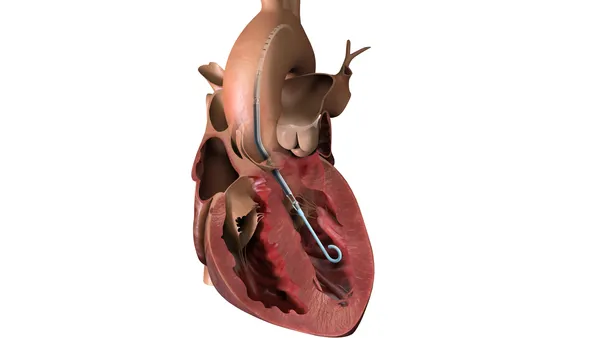Dive Brief:
-
Abbott has received FDA emergency use authorization for a COVID-19 antigen it is pricing at $5 that delivers results in 15 minutes.
-
Other companies including BD and Quidel already sell antigen tests but Abbott’s scale led some analysts to identify its entry to the market as a potential game-changer. Abbott plans to ship 50 million kits a month starting in October, making mass testing more feasible.
-
The EUA, which Abbott disclosed Wednesday, covers an immunoassay that, like a pregnancy test, displays colored lines on a test card to show whether a sample contains SARS-CoV-2.
Dive Insight:
The relatively low cost of antigen testing, coupled to its ability to deliver results within 15 minutes, makes the technology a better fit for the mass-testing advocated in some quarters as a way to help workplaces, schools and universities safely reopen. Such characteristics have led HHS to work with BD and Quidel to source tests for 14,000 nursing homes, and persuaded at least 10 states to order 5 million antigen tests from the same companies.
Capacity, accuracy and cost are potential barriers to further use of antigen tests, though. Abbott’s EUA could lower those barriers. BD’s goal is to make 8 million tests a month by March. Quidel can theoretically produce 7 million tests a month. Abbott, in contrast, plans to ship “tens of millions” of BinaxNOW COVID-19 Ag Card tests next month and hit a 50 million monthly run rate by October.
Abbott is undercutting the competition on price, too. HHS is paying BD and Quidel between $20 and $25 each for antigen tests that run on instruments. That is notably less than the price of PCR tests, which HHS said are costing nursing homes $120 a piece, but several times as much as the $5 Abbott is charging for its antigen kits. Abbott’s test does not need a separate instrument to deliver a result.
The available data suggest Abbott is competitive in terms of accuracy, too. Abbott ran a study of 102 nasal swab samples taken from people within seven days of the onset of COVID-19 symptoms to compare the results from its antigen test to the output of a PCR method. The results were the same most of the time, giving the antigen test a specificity of 98.5% and sensitivity of 97.1%.
Abbott’s results are similar to those used by LumiraDx and Quidel to secure EUAs for their antigen tests. BD underperformed the competition in terms of sensitivity, which came in at 84%, but was a top performer on the specificity front.
The Abbott data come from a study that ran at seven U.S. sites that employed operators who had no laboratory experience and received no training on the use of the test. Use of the test entails adding drops of extraction reagent to a well before inserting and twirling a swab. The test card is then closed and sealed. After 15 minutes, the operator looks for the pink or purple colored lines that indicate a positive result.
Scott Gottlieb, a former FDA commissioner, hailed the EUA as a big moment for COVID-19 testing in a post on Twitter. “This significant entry could help democratize testing, making more tests more available to people in more austere settings that don't have all the trappings found in a medical office; including schools,” Gottlieb wrote.
The EUA authorizes the use of the test “in patient care settings operating under a CLIA Certificate of Waiver, Certificate of Compliance, or Certificate of Accreditation,” adding that it is intended for use by “medical professionals or trained operators who are proficient in performing rapid lateral flow tests.”
Reflecting Abbott’s study, FDA has limited the use of the antigen test to direct nasal swabs. That may create capacity constraints. Quidel recently amended its EUA to support the use of nasopharyngeal swabs, in addition to nasal swabs. The action was intended to “alleviate some of the supply chain constraints around nasal swab-based kits.”












